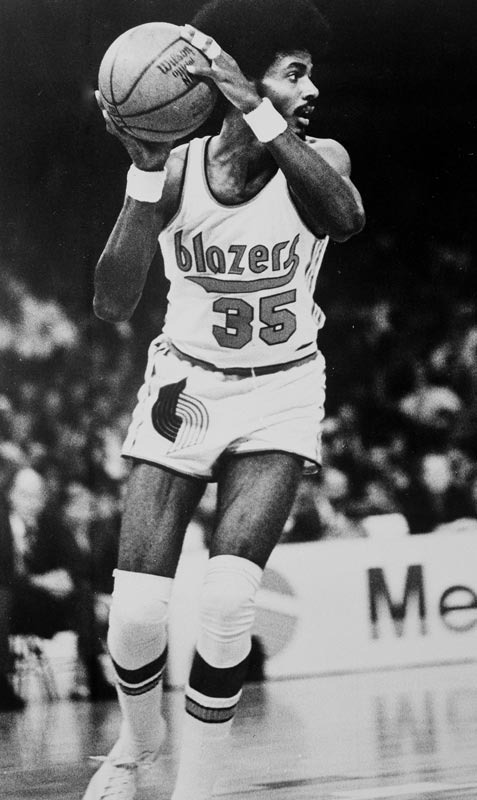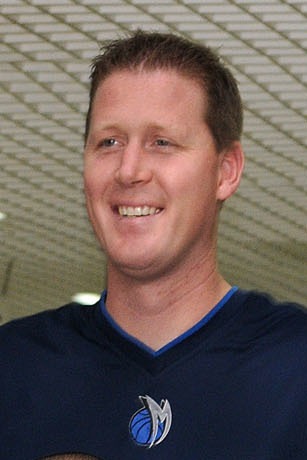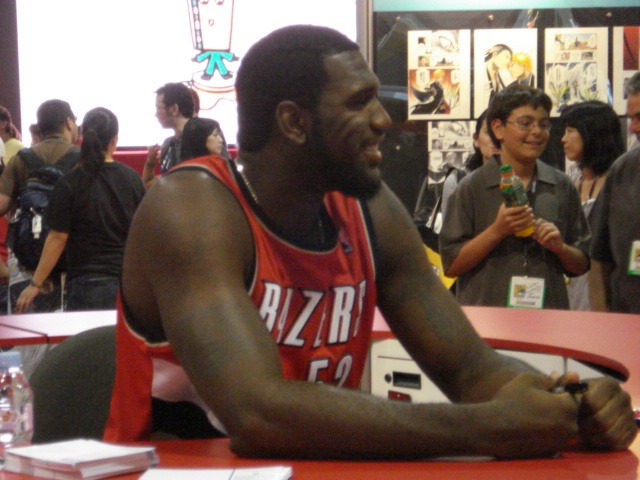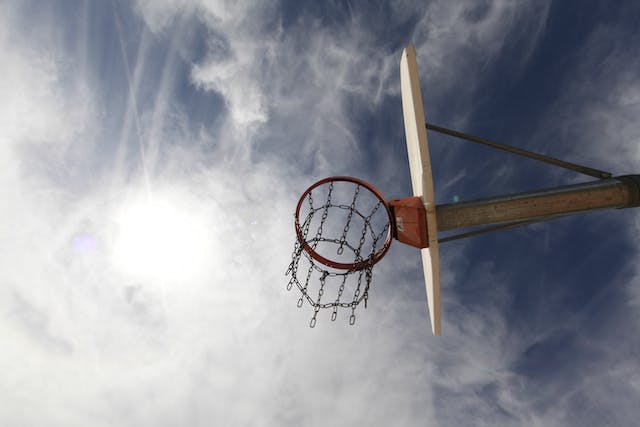LaRue Martin (Drafted 1st Overall in 1972) – He was drafted in 1972 by the Wizards with first pick overall. After three uneventful seasons, he became worse in the fourth season when he suffered injuries. He was traded to the LA Lakers, and he didn’t deliver anything for the team either.He is often cited as the worst first overall draft pick in NBA history. The 6’11” from Loyola University entered the NBA with much fanfare. LaRue delivered a poor performance in his four years with the Trailblazers. He left after the 1975-1976 season, just before the Trailblazers won their first-ever championship.
Sam Bowie (Drafted 2nd overall in 1984) – Sam Bowie’s reputation as one of the biggest busts in NBA history is largely attributed to his injury-plagued career and the context of the 1984 NBA Draft. Selected second overall by the Portland Trail Blazers, just ahead of Michael Jordan, Bowie was expected to be a transformative player. However, chronic injuries severely limited his impact and playing time, preventing him from living up to the lofty expectations set for him. His underwhelming performance, coupled with the subsequent success of Jordan, Charles Barkley, and John Stockton – all drafted after him – further magnified the perception of Bowie as a draft misstep. His career serves as a poignant example of how injuries can derail the promise of even the most talented athletes, and how draft decisions can become magnified in the context of the successes of contemporaries.
Shawn Bradley (Drafted 2nd overall in 1993) – Shawn Bradley’s status as an NBA bust is often attributed to the disparity between his towering 7-foot-6 stature and his on-court impact. Drafted 2nd overall by the Philadelphia 76ers in 1993, Bradley was expected to dominate the league with his height and shot-blocking ability. However, his NBA career fell short of these expectations. Despite being a decent shot-blocker, Bradley struggled with physicality and consistency, often being overpowered by stronger opponents and failing to develop a robust offensive game. His inability to fully utilize his height advantage in a league where such physical attributes are typically a significant asset led to a perception of underachievement relative to his draft position and the hype surrounding his unique physical presence.
Ed O’Bannon (Drafted 9th overall in 1995) – The story of Ed O’Bannon as an NBA bust revolves around the stark contrast between his collegiate success and his professional career. O’Bannon was a star at UCLA, leading his team to an NCAA Championship and earning the Most Outstanding Player award in the 1995 NCAA tournament. Drafted 9th overall by the New Jersey Nets, expectations were high for his NBA career. However, O’Bannon struggled to replicate his college success in the NBA, facing difficulties in adapting his game to the professional level. His inability to make a significant impact or evolve as a player in the NBA led to a short and underwhelming career, marking him as a notable draft disappointment.
Joe Smith (Drafted 1st overall in 1995) – oe Smith’s designation as an NBA bust stems primarily from the unfulfilled expectations that accompany a first overall draft pick. Selected first in the 1995 NBA Draft by the Golden State Warriors, Smith was anticipated to be a franchise-altering talent. While he had a lengthy NBA career, Smith never reached the superstar status that one would expect from a top draft selection. He became more of a journeyman than a cornerstone player, lacking the dominant impact or star quality typically associated with the number one pick. This discrepancy between expectation and performance is what categorizes Smith’s NBA tenure as a bust.
Michael Olowokandi (Drafted 1st overall in 1998) – Michael Olowokandi’s case as an NBA bust is highlighted by the high expectations set by his number one draft pick status and the success of his draft contemporaries. Chosen first overall in the 1998 NBA Draft by the Los Angeles Clippers, Olowokandi was selected before future Hall of Famers Dirk Nowitzki and Paul Pierce. His collegiate dominance at the University of the Pacific led to high expectations. However, Olowokandi struggled significantly in the NBA, failing to develop into the dominant center he was projected to be. His lackluster performance and inability to live up to the potential expected of a top draft choice, especially in contrast to the careers of those drafted after him, solidified his status as a significant draft bust.
Robert Traylor (Drafted 2cnd overall in 1998) – The Bulls took him second overall. He had the makings of a superstar until a motorcycle accident sent him to injuries. Traylor was actually drafted by the Dallas Mavericks in 1998 before he was traded to the Milwaukee Bucks for the No. 19 pick Pat Garrity and No. 9 pick, who turned out to be future star and MVP Dirk Nowitzki.
Darius Miles (Drafted 3rd overall in 2000) – Darius Miles entered the NBA with high expectations due to his athleticism and potential. However, his career was marked by inconsistency and unfulfilled potential. Miles struggled to develop a well-rounded game and failed to establish himself as the star player he was projected to be, leading to a career that fell short of the lofty expectations set for a top-three pick.
Kwame Brown (Drafted 1st overall in 2001) – As the first high school player selected first overall, Kwame Brown faced immense pressure. Throughout his career, Brown struggled with the physical and mental demands of the NBA, never developing into the dominant player expected of a number one draft pick, resulting in a career viewed as underwhelming compared to the expectations.
Nikoloz Tskitishvili (Drafted 5th overall in 2002) – Tskitishvili was expected to make a significant impact in the NBA. However, he struggled to adjust to the league’s pace and physicality, leading to a disappointing career that fell far short of the promise suggested by his high draft position.
Darko Miličić (Drafted 2nd overall in 2003) – Darko Miličić’s career paled in comparison to his contemporaries like LeBron James and Carmelo Anthony. He failed to make a significant impact in the NBA, becoming a footnote in a draft class filled with superstars.
Robert Swift (Drafted 12th overall in 2004) – Swift’s career was marred by injuries and personal issues. These challenges prevented him from reaching the potential that his draft position suggested, leading to a career that was largely unremarkable.
DeSagana Diop (Drafted 8th overall in 2001) – Diop was expected to be a significant contributor in the NBA. However, he failed to live up to the expectations, struggling to develop into a reliable player, and his career was seen as underwhelming for a top-ten pick.
Rafael Araújo (Drafted 8th overall in 2004) – Araújo’s NBA career failed to justify his high draft selection. He struggled with the speed and skill level of the league, leading to a lackluster tenure in the NBA.
Marvin Williams (Drafted 2nd overall in 2005) – Marvin Williams had a decent NBA career but didn’t meet the high expectations associated with a number two pick, especially given the success of players drafted after him like Deron Williams and Chris Paul.
Adam Morrison (Drafted 3rd overall in 2006) – Morrison’s promising start was derailed by an ACL injury. He struggled to regain his form upon returning, eventually becoming more of a bench player, a far cry from the expectations of a top-three pick. He also spent with the Los Angeles Lakers as a benchwarmer.
Jianlian Yi (Drafted 6th overall in 2007) – Yi couldn’t adapt to the NBA game, leading to a short-lived career in the league. His inability to adjust to the physicality and pace of the NBA was a primary factor in his quick exit.
Hasheem Thabeet (Drafted 2nd overall in 2009) – As a 7’3″ center, Thabeet was expected to dominate and had high expectations. However, he failed to dominate or significantly impact the league, proving to be a disappointment for a player selected so high.
Greg Oden (Drafted 1st overall in 2007) – Oden’s career was hampered by knee injuries from the outset, preventing him from ever fully realizing his potential and leading to a career marked more by what could have been than what was.
Jonny Flynn (Drafted 6th overall in 2009) – Flynn’s career was underwhelming, especially when considering that he was selected just before Stephen Curry. His inability to make a notable impact in the league marked his tenure as a disappointment.
Derrick Williams (Drafted 2nd overall in 2011) – Williams failed to make a significant impact in the NBA, falling short of the expectations set by his high draft position and promising college career.
Anthony Bennett (Drafted 1st overall in 2013) – Bennett is often cited as one of the biggest draft busts in NBA history. His performance in the league was underwhelming compared to the expectations of a number one pick, leading to a brief and largely unremarkable NBA career.
The label of an “NBA bust” encapsulates the unpredictable nature of athletic success at the highest level. While it highlights the unmet expectations and unfulfilled potentials of certain high-profile players, it also underscores the myriad challenges that come with transitioning to the NBA. These stories of unmet potential are not just about individual shortcomings but also speak to the broader intricacies of player development, the pressures of professional sports, and the uncertain path to success in the highly competitive world of basketball. They remind us that for every superstar’s story, there are numerous tales of tragic injuries, struggle and unfulfilled promise, each offering valuable lessons about the nature of sports, success, and the delicate balance between potential and achievement.





